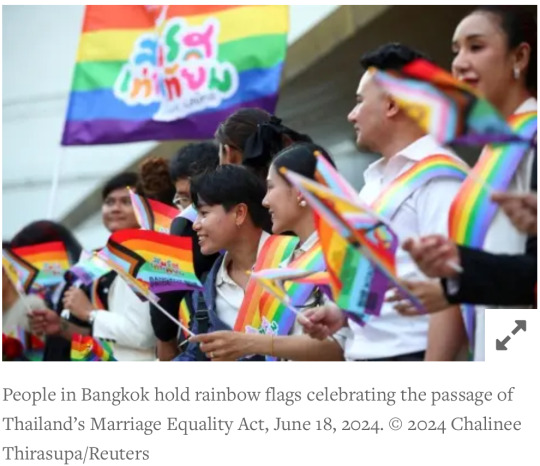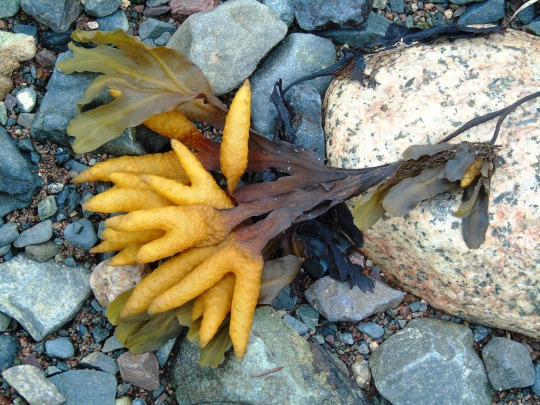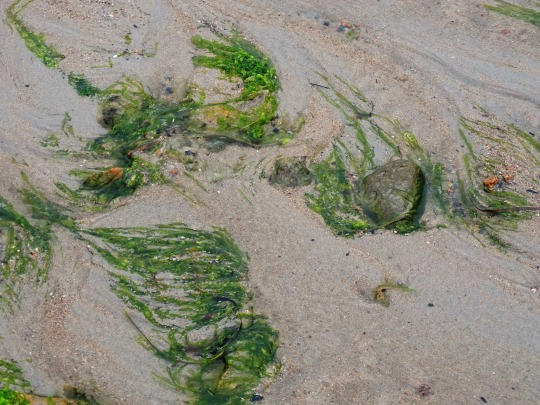#soil carbon improvements
Explore tagged Tumblr posts
Text
1,300 Kenyan Farmers Graduate After Four Years of First-of-its-Kind Sustainable Agroforestry and Climate Action Training Program
Discover how over 1,300 farmers in Homa Bay, Kenya, are transforming their livelihoods and restoring the environment through Trees for the Future’s Forest Garden Program, a sustainable agroforestry initiative. Learn how agroforestry techniques like composting, crop rotation, and tree planting are empowering farmers in Kenya to combat climate change, increase food security, and boost…
#agroforestry in Kenya#agroforestry income generation#agroforestry projects#biodiversity conservation#biodiversity enhancement#carbon offset projects#carbon sequestration#climate change Solutions#composting techniques#crop rotation#crop yields#deforestation reversal#entrepreneurial farming#environmental sustainability#farmer training#farmer-to-farmer learning#Food security#Forest Garden Program#green jobs in agriculture.#Homa Bay agroforestry#integrated pest management#reforestation#smallholder farmers#soil carbon improvements#soil restoration#Sustainable agroforestry#sustainable farming practices#tree biomass#tree planting#women in agriculture
8 notes
·
View notes
Text
0 notes
Text
Masterpost: Reasons I firmly believe we will beat climate change
Posts are in reverse chronological order (by post date, not article date), mostly taken from my "climate change" tag, which I went through all the way back to the literal beginning of my blog. Will update periodically.
Especially big deal articles/posts are in bold.
Big picture:
Mature trees offer hope in world of rising emissions (x)
Spying from space: How satellites can help identify and rein in a potent climate pollutant (x)
Good news: Tiny urban green spaces can cool cities and save lives (x)
Conservation and economic development go hand in hand, more often than expected (x)
The exponential growth of solar power will change the world (x)
Sun Machines: Solar, an energy that gets cheaper and cheaper, is going to be huge (x)
Wealthy nations finally deliver promised climate aid, as calls for more equitable funding for poor countries grow (x)
For Earth Day 2024, experts are spreading optimism – not doom. Here's why. (x)
Opinion: I’m a Climate Scientist. I’m Not Screaming Into the Void Anymore. (x)
The World’s Forests Are Doing Much Better Than We Think (x)
‘Staggering’ green growth gives hope for 1.5C, says global energy chief (x)
Beyond Catastrophe: A New Climate Reality Is Coming Into View (x)
Young Forests Capture Carbon Quicker than Previously Thought (x)
Yes, climate change can be beaten by 2050. Here's how. (x)
Soil improvements could keep planet within 1.5C heating target, research shows (x)
The global treaty to save the ozone layer has also slowed Arctic ice melt (x)
The doomers are wrong about humanity’s future — and its past (x)
Scientists Find Methane is Actually Offsetting 30% of its Own Heating Effect on Planet (x)
Are debt-for-climate swaps finally taking off? (x)
High seas treaty: historic deal to protect international waters finally reached at UN (x)
How Could Positive ‘Tipping Points’ Accelerate Climate Action? (x)
Specific examples:
Environmental Campaigners Celebrate As Labour Ends Tory Ban On New Onshore Wind Projects (x)
Private firms are driving a revolution in solar power in Africa (x)
How the small Pacific island nation of Vanuatu drastically cut plastic pollution (x)
Rewilding sites have seen 400% increase in jobs since 2008, research finds [Scotland] (x)
The American Climate Corps take flight, with most jobs based in the West (x)
Waste Heat Generated from Electronics to Warm Finnish City in Winter Thanks to Groundbreaking Thermal Energy Project (x)
Climate protection is now a human right — and lawsuits will follow [European Union] (x)
A new EU ecocide law ‘marks the end of impunity for environmental criminals’ (x)
Solar hits a renewable energy milestone not seen since WWII [United States] (x)
These are the climate grannies. They’ll do whatever it takes to protect their grandchildren. [United States and Native American Nations] (x)
Century of Tree Planting Stalls the Warming Effects in the Eastern United States, Says Study (x)
Chart: Wind and solar are closing in on fossil fuels in the EU (x)
UK use of gas and coal for electricity at lowest since 1957, figures show (x)
Countries That Generate 100% Renewable Energy Electricity (x)
Indigenous advocacy leads to largest dam removal project in US history [United States and Native American Nations] (x)
India’s clean energy transition is rapidly underway, benefiting the entire world (x)
China is set to shatter its wind and solar target five years early, new report finds (x)
‘Game changing’: spate of US lawsuits calls big oil to account for climate crisis (x)
Largest-ever data set collection shows how coral reefs can survive climate change (x)
The Biggest Climate Bill of Your Life - But What Does It DO? [United States] (x)
Good Climate News: Headline Roundup April 1st through April 15th, 2023 (x)
How agroforestry can restore degraded lands and provide income in the Amazon (x) [Brazil]
Loss of Climate-Crucial Mangrove Forests Has Slowed to Near-Negligable Amount Worldwide, Report Hails (x)
Agroecology schools help communities restore degraded land in Guatemala (x)
Climate adaptation:
Solar-powered generators pull clean drinking water 'from thin air,' aiding communities in need: 'It transforms lives' (x)
‘Sponge’ Cities Combat Urban Flooding by Letting Nature Do the Work [China] (x)
Indian Engineers Tackle Water Shortages with Star Wars Tech in Kerala (x)
A green roof or rooftop solar? You can combine them in a biosolar roof — boosting both biodiversity and power output (x)
Global death tolls from natural disasters have actually plummeted over the last century (x)
Los Angeles Just Proved How Spongy a City Can Be (x)
This city turns sewage into drinking water in 24 hours. The concept is catching on [Namibia] (x)
Plants teach their offspring how to adapt to climate change, scientists find (x)
Resurrecting Climate-Resilient Rice in India (x)
Edit 1/12/25: Yes, I know a bunch of the links disappeared. I'll try to fix that when I get the chance. In the meantime, read all the other stuff!!
Other Masterposts:
Going carbon negative and how we're going to fix global heating (x)
#climate change#climate crisis#climate action#climate emergency#climate anxiety#climate solutions#fossil fuels#pollution#carbon emissions#solar power#wind power#trees#forests#tree planting#biodiversity#natural disasters#renewables#renewable electricity#united states#china#india#indigenous nations#european union#plant biology#brazil#uk#vanuatu#scotland#england#methane
3K notes
·
View notes
Text
When Stockholm’s Traffic Office conducted a general assessment of street traffic in the Swedish capital in 2001, it came to the shocking conclusion that two-thirds of all trees in the city center were dead or dying.
City authorities agreed that an urgent response was needed to nurse these leafy urban ecosystem pillars back to health.
Enter Björn Embrén, Stockholm’s first “tree officer.”
Under his leadership, various technologies and materials were tested in an attempt to create a more suitable living space for trees in the urban environment.
“I knew that they could grow if the circumstances were right,” says Embrén, a former professional gardener.
“It’s like putting a plastic bag over your head and tightening it over your neck,” says Embrén. “That’s what happened to the trees in Stockholm. They were dying.”
Eventually, inspired by railroad embankments — which require only a small amount of organic matter for healthy trees to grow — Embrén concocted what was to become known as the “Stockholm tree pit” model.
By 2002, Embrén had drawn up designs. And by 2003, they were already building.
The design involves digging a pit and constructing a frame underground around the tree’s roots, and then filling said pit with a mixture of soil and stone, sometimes including biochar, to both aerate and fertilize the soil. These permeable layers are very strong and physically adaptable but also allow stormwater to flow in, meaning the trees are provided with sufficient air and water naturally. They also allow rainwater to be soaked up — a necessity amid more extreme weather brought on by climate change.
“We found that the more breathable the materials we used, the happier the trees were,” adds Embrén.
Proponents say the method has a number of benefits, including the fact that pits can be installed around existing trees, they can bear the weight of heavy-vehicle traffic, they require little topsoil — a resource that is becoming scarce — and they need less watering than traditionally-planted trees.
This approach, which allows tree roots to thrive beneath hard surfacing, ergo allowing healthy trees to grow within the modern built environment, is particularly relevant as cities attempt to re-green and reforest in the face of climate change.
According to the United Nations Economic Commission for Europe, urban forests can help “future-proof” cities, which are responsible for about 75 percent of global CO2 emissions. Sustainable urban forestry, it says, can bring multiple benefits, such as lowering temperatures, improving public health, creating habitats for biodiversity, sequestering carbon, generating green jobs, and mitigating risks of floods and landslides.
“It’s more important now than ever before,” says Ryan Klein, an assistant professor in the Department of Environmental Horticulture at the University of Florida. “We have these massive populations in urban areas. And we’re seeing more extreme weather like hurricanes, wildfires and prolonged droughts. Trees can help to offset some of these negative effects.”
However, amid the rush to rapidly reforest cities, experts like Klein warn that due to ineffective methods and techniques being used, it’s common to see urban trees in poor health, and trees planted in cities often have very high mortality rates.
“We have the understanding of how to grow healthier, more sustainable and resilient forests,” says Klein. “The research backs it. Unfortunately, we don’t always invest the time, money or internal know-how on implementing this.”
A review of 16 scientific studies on urban tree mortality, published in 2019, found that in the first five years after planting, 6.6 to 7 percent of trees died annually.
“Urban soils are not very tree-friendly currently,” says Rik De Vreese, leader of the Urban Forestry Team at the European Forestry Institute. “It’s quite a serious threat.”
When trees aren’t properly anchored, De Vreese adds, it can also lead to other issues, such as trunks falling over and causing damage or roots warping sidewalks.
However, the Stockholm Tree Pit method — and the way that it’s been implemented in Sweden — is helping urban forests genuinely take root.
One of the first locations where Embrén introduced a tree pit was Erik Dahlbergsallén street in Stockholm, not far from the popular Swedish Museum of Natural History.
There, according to research by the municipality, the circumference of a selection of those planted trees increased from 30 to 35 centimeters to 70 to 83 centimeters between 2004 and 2013, even surpassing that of trees without the tree pits that have been there for more than 80 years. The latest figures from 2024 saw them reach between 100 and 136 centimeters.
“It’s easy to see how effective the pits have been,” says Embrén.
The municipality estimates that 2.3 million liters of rainwater are managed by the trees per year, and consequently, 4,600 square meters of roofs and sidewalks have been disconnected from the sewage system, reducing the burden on water treatment services.
This technique has proven so successful that it has become the standard for all other development projects in the public spaces of Stockholm. Embrén says he has been directly involved in constructing more than 3,000 tree pits, and while he has since retired, there are now three “tree officers” who have taken on the expanding role.
Britt-Marie Alvem, one of the current tree officers, estimates that the city now builds between 500 and 1,000 tree pits a year.
These days, the tree pits are also in almost every Swedish city — with a few variations.
“Some have copied and changed a little bit, like adding pumice to the stone mix,” says Embrén.
Stockholm’s tree pits are now spreading across Europe, too. In Budapest, Hungary’s capital, the tree pits can be found all over Bartók Béla Boulevard and Arany János Street. Embrén says the Spanish city of Madrid has implemented the method using local materials. And it’s become increasingly popular in the U.K.
Ben Rose, the principal arboricultural consultant at U.K. tree service Bosky Trees and the founder of Stockholm Tree Pits, a U.K.-based company that produces the equipment required to make tree pits, says that he has planted about 500 trees using the Stockholm model in the U.K. since he began in 2019, mostly as part of small-scale pilot projects.
“The approach is very suitable for use in urban situations, particularly in car parks, in plazas, and beside walkways or cycle paths,” says Rose.
Join the Reasons to be Cheerful community by supporting our nonprofit publication and giving what you can. JoinCancel anytime
Yet there are some drawbacks to the system. Installation costs can be high, the pits can require a large amount of space to install, and it is impossible to reuse existing soil. In addition, for now there is a relative dearth of professionals who know how to construct tree pits.
“Our main concern is the price,” says De Vreese, whose team is currently studying the importance of “structural soils” like those deployed by the tree pits. “Excavating the soil surrounding the tree and refilling it is no small job.”
And while Professor Klein praises the Stockholm Tree Pit’s use of structural soil and how effective it’s proven to be, he notes that the long-term success of urban forestry also relies on other factors such as the supply of high quality nursery stock and proactive tree management such as routine pruning by municipalities.
“If we don’t have these we are setting ourselves up for failure,” he says. “Some cities do the bare minimum. In the U.S.A., it’s the wild west. But others, like Stockholm, are proactive, and they have public officials seriously behind it. That’s what we need.”
By: Peter Yeung, March 4, 2025
#urban forests#urban trees#trees#tree pits#stockholm#good news#environmentalism#science#environment#nature#climate crisis#climate change#urban design#urban landscape#urban life#cityscape#city#street#streetscape#urban#soil health#reforestation
450 notes
·
View notes
Text
Good News - June 15-21
Like these weekly compilations? Tip me at $Kaybarr1735! And if you tip me and give me a way to contact you, at the end of the month I'll send you a link to all of the articles I found but didn't use each week!
1. Victory for Same-Sex Marriage in Thailand

“Thailand’s Senate voted 130-4 today to pass a same-sex marriage bill that the lower house had approved by an overwhelming majority in March. This makes Thailand the first country in Southeast Asia, and the second in Asia, to recognize same-sex relationships. […] The Thai Marriage Equality Act […] will come into force 120 days after publication in the Royal Gazette. It will stand as an example of LGBT rights progress across the Asia-Pacific region and the world.”
2. One of world’s rarest cats no longer endangered

“[The Iberian lynx’s] population grew from 62 mature individuals in 2001 to 648 in 2022. While young and mature lynx combined now have an estimated population of more than 2,000, the IUCN reports. The increase is largely thanks to conservation efforts that have focused on increasing the abundance of its main food source - the also endangered wild rabbit, known as European rabbit. Programmes to free hundreds of captive lynxes and restoring scrublands and forests have also played an important role in ensuring the lynx is no longer endangered.”
3. Planning parenthood for incarcerated men
“[M]any incarcerated young men missed [sex-ed] classroom lessons due to truancy or incarceration. Their lack of knowledge about sexual health puts them at a lifelong disadvantage. De La Cruz [a health educator] will guide [incarcerated youths] in lessons about anatomy and pregnancy, birth control and sexually transmitted infections. He also explores healthy relationships and the pitfalls of toxic masculinity. […] Workshops cover healthy relationships, gender and sexuality, and sex trafficking.”
4. Peru puts endemic fog oasis under protection

“Lomas are unique ecosystems relying on marine fog that host rare and endemic plants and animal species. […] The Peruvian government has formally granted conservation status to the 6,449-hectare (16,000-acre) desert oasis site[….] The site, the first of its kind to become protected after more than 15 years of scientific and advocacy efforts, will help scientists understand climatic and marine cycles in the area[, … and] will be protected for future research and exploration for at least three decades.”
5. Religious groups are protecting Pride events — upending the LGBTQ+ vs. faith narrative

“In some cases, de-escalation teams stand as a physical barrier between protesters and event attendees. In other instances, they try to talk with protesters. The goal is generally to keep everyone safe. Leigh was learning that sometimes this didn’t mean acting as security, but doing actual outreach. That might mean making time and space to listen to hate speech. It might mean offering food or water. […] After undergoing Zoom trainings this spring, the members of some 120 faith organizations will fan out across more than 50 Pride events in 16 states to de-escalate the actions of extremist anti-LGBTQ+ hate groups.”
6. 25 years of research shows how to restore damaged rainforest
“For the first time, results from 25 years of work to rehabilitate fire-damaged and heavily logged rainforest are now being presented. The study fills a knowledge gap about the long-term effects of restoration and may become an important guide for future efforts to restore damaged ecosystems.”
7. Audubon and Grassroots Carbon Announce First-of-its-Kind Partnership to Reward Landowners for Improving Habitats for Birds while Building Healthy Soils

“Participating landowners can profit from additional soil carbon storage created through their regenerative land management practices. These practices restore grasslands, improve bird habits, build soil health and drive nature-based soil organic carbon drawdown through the healthy soils of farms and ranches. […] Additionally, regenerative land management practices improve habitats for birds. […] This partnership exemplifies how sustainable practices can drive positive environmental change while providing tangible economic benefits for landowners.”
8. Circular food systems found to dramatically reduce greenhouse gas emissions, require much less agricultural land
“Redesigning the European food system will reduce agricultural land by 44% while dramatically reducing greenhouse gas emissions from agriculture by 70%. This reduction is possible with the current consumption of animal protein. “Moreover, animals are recyclers in the system. They can recycle nutrients from human-inedible parts of the organic waste and by-products in the food system and convert them to valuable animal products," Simon says.”
9. Could Treating Injured Raptors Help Lift a Population? Researchers found the work of rehabbers can have long-lasting benefits

“[“Wildlife professionals”] tend to have a dismissive attitude toward addressing individual animal welfare,” [… but f]or most raptor species, they found, birds released after rehabilitation were about as likely to survive as wild birds. Those released birds can have even broader impacts on the population. Back in the wild, the birds mate and breed, raising hatchlings that grow up to mate and breed, too. When the researchers modeled the effects, they found most species would see at least some population-level benefits from returning raptors to the wild.”
10. Indigenous people in the Amazon are helping to build bridges & save primates

“Working together, the Reconecta Project and the Waimiri-Atroari Indigenous people build bridges that connect the forest canopy over the BR-174 road[….] In the first 10 months of monitoring, eight different species were documented — not only monkeys such as the golden-handed tamarin and the common squirrel monkey (Saimiri sciureus), but also kinkajous (Potos flavus), mouse opossums (Marmosops sp.), and opossums (Didelphis sp.).”
Bonus: A rare maneless zebra was born in the UK
June 8-14 news here | (all credit for images and written material can be found at the source linked; I don’t claim credit for anything but curating.)
#hopepunk#good news#lgbtq#gay rights#gay marriage#same sex marriage#thailand#lynx#big cats#cats#endangered species#endangered#sex education#prison#peru#conservation#habitat#religion#pride#faith#pride month#lgbt pride#compassion#rainforest#birds#nature#climate change#wildlife rehab#wildlife#indigenous
1K notes
·
View notes
Text
RPTU University of Kaiserslautern-Landau has shown for the first time, in a joint study with BOKU University, that permaculture brings about a significant improvement in biodiversity, soil quality and carbon storage. In view of the challenges of climate change and species extinction, this type of agriculture proved to be a real alternative to conventional cultivation—and reconcile environmental protection and high yields. Permaculture uses natural cycles and ecosystems as blueprint. Food is produced in an agricultural ecosystem that is as self-regulating, natural and diverse as possible. For example, livestock farming is integrated into the cultivation of crops or the diversity of beneficial organisms is promoted in order to avoid the use of mineral fertilizers or pesticides. In a study, published in the journal Communications Earth & Environment, researchers from RPTU and BOKU have now, for the first time, comprehensively investigated the effects of this planning and management concept on the environment.
[...]
"Permaculture appears to be a much more ecologically sustainable alternative to industrial agriculture," said Julius Reiff . At the same time, the yields from permaculture are comparable to those of industrial agriculture, as the researchers' not yet published data shows. "In view of the challenges of climate change and biodiversity loss, the observed improvements would represent a real turnaround when applied to larger areas," says ecosystem analysis expert Martin Entling from RPTU.
4 July 2024
466 notes
·
View notes
Text

Isopods, aka roly-polies or pill bugs, - tiny crustaceans with BIG impacts
They’re detritivores, meaning they feast on dead and decaying organic matter—like fallen leaves, wood, and even fungi. 🍂🥀🪵
Here’s why they’re vital for our soil:
🌱 Nutrient Recycling: As they munch through plant material, they break it down into smaller particles, speeding up the decomposition process. This enriches the soil with vital nutrients that plants need to thrive.
🔄 Carbon Cycling: By decomposing organic material, isopods play a key role in the carbon cycle, helping store carbon in the soil and reducing carbon loss to the atmosphere.
🌍 Soil Aeration: While burrowing and feeding, isopods loosen compacted soil, improving oxygen flow and creating a healthier environment for plant roots and microorganisms.
Found on every continent except Antarctica, isopods thrive in forests, gardens, and even urban environments. 🌟 Wherever there’s organic matter to break down, these hardworking decomposers are on the job!
So next time you see an isopod, give it some love! 🤍 They’re working hard to keep our soil alive and thriving. 🌿
#soil health#soil science#soil#permaculture#isopods#pill bug#roly poly#environmental education#environmental awareness#regenerative farming#regenerative agriculture#agriculture#sustainable living#sustainable farming#sustainability#organic life#organic matter#organic lifestyle#organic farming#organic#vermicompost#composting#compost lifestyle#compost#biodiversity#conservation#ecomindset#bugs#insects#nature lovers
89 notes
·
View notes
Note
If you had all the money in the world, what would you buy and why? Bonus points if it’s related to paleontology, though I also won’t say no to a feedist answer
i’d buy land in incredibly ecologically sensitive areas for conservation and restoration tbh… i love fossils so much, so maybe i’d also fund research/prep labs/collection curators, BUT the truth is the world we have now is more important…
i’d focus on grassland and prairie land too <33 trees are cool and all but grasslands are rapidly shrinking and not nearly as popular (bc public interest in land cover type undoubtedly improves whether or not smthn will be conserved)—not to mention soil health is very important, agriculture worldwide relies on soils developed over thousands of years of grassland existence… AND they’re an excellent carbon sink!! the expansion of grasslands in the miocene is largely the reason for the climate we have now!!
i’d also fund everything i could in order to reduce water scarcity in texas and through the southwest tbh
#more funding for invertebrate and non-animal based paleontologists#not saying the verts get notably more funding but. you know#invertebrate and climatic/population level paleontology needs some spotlight#talk#ask
76 notes
·
View notes
Text
Soil stores large amounts of organic carbon, whose dynamic changes can cause a huge impact on the global climate system. Forest succession is a long-term ecological process that can exert powerful effects on soil organic carbon (SOC) due to variations in plant community composition, microenvironment, plant debris stock, soil nutrient availability and microbial community composition among different successional stages. Clarifying the dynamic changes of SOC across the forest successional series will provide insights into the global soil carbon cycle and improve the accuracy of terrestrial carbon cycle models. However, existing literature mostly focuses on the changes in SOC in the surface soil across forest succession, while SOC buried in deep soil is often neglected. Moreover, how SOC quality changes across the forest successional series remains unclear. Despite these limitations, there is a lack of comprehensive investigation of the changes in SOC stock and quality across the forest succession.
Continue Reading.
97 notes
·
View notes
Text
Excerpt from this story from Inside Climate News:
Soon after Vice President Kamala Harris selected Tim Walz as her running mate this week, pictures of the Minnesota governor began to spread across social media—of Walz holding a piglet, of Walz on thrill rides at the state fair, of Walz and his rescue dog.
All of it coalesces into an image of a guy with rural roots and deep ties to agriculture.
Since Harris’ announcement, climate advocates have applauded her pick, pointing to Walz’s solid climate bona fides. Farm groups across the political spectrum, including those that work to shrink agriculture’s carbon footprint, have, too.
During his six terms in Congress, Walz was a member of the House Committee on Agriculture, where he was instrumental in ensuring that soil conservation measures made it into the 2018 farm bill. At the time, the farm bill—the massive piece of legislation that guides the country’s nutrition and farm policy—failed to acknowledge agriculture’s role in contributing to climate change, and barely hinted at its potential role in slowing it.
Walz, who spent his early years working on his family’s farm in rural Nebraska, found a political work-around of sorts. That year he introduced the Strengthening Our Investment in Land (SOIL) Stewardship Act, which boosted existing farm conservation programs and incentivized farms to adopt certain practices that improve soil health, ultimately making soils better able to sequester carbon.
“Even as short a time ago as 2018, the word ‘climate’ does not appear in the farm bill,” said Ferd Hoefner, who was policy director at the National Sustainable Agriculture Coalition at the time. “He made soil health, through the SOIL Act, the acceptable thing one could talk about when one was trying to talk about climate mitigation through agriculture.”
Hoefner noted that the last time the term climate change appeared in a farm bill was in 1990, an indication of just how polarized and partisan the issue has become in farm policy debates since then. After that, it “was verboten to even mention the word,” he added.
The provisions of the SOIL Stewardship Act were ultimately included in that year’s farm bill. Farm policy observers also point to one of Walz’s biggest farm-related accomplishments, which was introducing bills in 2014 and 2018 that help small-scale, veteran and beginning farmers access credit and funds for land, equipment and crop insurance. Provisions of these bills made it into the final versions of those years’ farm bills.
The Land Stewardship Project, based in Minnesota, has long pushed against the trend of increasing consolidation in agriculture, which has seen the rise of ever-larger farms, mostly run by large corporate entities. This week the council applauded Walz’s record of working against this ongoing shift.
“What we’ve seen through his time in Congress and his time in the governor’s office is that issues around the future of agriculture and rural communities aren’t partisan—they cut across political lines,” said Sean Carroll, policy director at Land Stewardship Action, the organization’s political arm. “Many bills he’s co-sponsored or led are about creating a future for rural communities where we can keep more farmers on the land, where we can allow farmers who are stewarding the land to succeed and make money.”
52 notes
·
View notes
Text
The future of seaweed in agriculture As agriculture trends shift toward sustainability, Kelp Blue believes seaweed biostimulants will become a standard in farming practices.
"At Kelp Blue, we cultivate Giant Kelp (Macrocystis pyrifera) to help growers reduce their carbon footprint while improving soil health and crop productivity,"
"Our seaweed-based biostimulant, StimBlue+, is a liquid seaweed extract that enhances plant resilience, improves nutrient uptake, and lowers the need for synthetic fertilizers – one of the biggest contributors to agricultural emissions."
14 notes
·
View notes
Text
Biochar in Agriculture: Why Kenyan Farmers Should Start Using Biochar for Sustainable Farming
Biochar is an age-old method of improving soil health. The earliest known use of biochar in agriculture was over 2,000 years ago by the pre-Columbian indigenous people of the Amazon Basin. When scientists tested the soil in the area, they noticed how it had remained rich for over eight hundred years. This is because the indigenous people of the Amazon Basin used amended leftover charcoal from…
#benefits of biochar#biochar#biochar agriculture#biochar and climate change#biochar carbon sequestration#biochar composting#biochar crop yields#biochar environmental benefits#biochar feedstocks#biochar for drought resilience.#biochar for farmers#biochar for soil health#biochar in composting#biochar in regenerative agriculture#biochar inoculation#biochar Kenya#biochar organic farming#biochar pH adjustment#biochar production#biochar pyrolysis process#biochar regenerative farming#biochar soil improvement#biochar uses#biochar water retention#how to make biochar#sustainable farming with biochar
0 notes
Text

Living plastics: A new solution for plastic degradation through synthetic biology
A study published in Nature Chemical Biology leverages the natural resilience of spores, which can endure extreme environmental conditions, by programming them to secrete plastic-degrading enzymes under specific circumstances. These spores are embedded into plastic matrices through standard plastic processing methods, such as high temperature, high pressure, or the use of organic solvents. In normal conditions, the spores remain dormant, ensuring the plastic's stable performance. However, when exposed to specific triggers like surface erosion or composting, the spores activate and initiate the degradation process, leading to the plastic's complete breakdown. The invention of plastics has improved our daily lives, but the massive production and improper disposal of plastic waste have made plastic pollution a major environmental issue. In 2016, Yoshida and team discovered a bacterium, Ideonella sakaiensis, in poly (ethylene terephthalate) (PET)-contaminated soil near a recycling facility in Japan. This bacterium can grow using PET as its main carbon source by producing two key enzymes: PETase and MHETase.
Read more.
42 notes
·
View notes
Text
"In an unprecedented transformation of China’s arid landscapes, large-scale solar installations are turning barren deserts into unexpected havens of biodiversity, according to groundbreaking research from the Chinese Academy of Sciences. The study reveals that solar farms are not only generating clean energy but also catalyzing remarkable ecological restoration in some of the country’s most inhospitable regions.
The research, examining 40 photovoltaic (PV) plants across northern China’s deserts, found that vegetation cover increased by up to 74% in areas with solar installations, even in locations using only natural restoration measures. This unexpected environmental dividend comes as China cements its position as the global leader in solar energy, having added 106 gigawatts of new installations in 2022 alone.
“Artificial ecological measures in the PV plants can reduce environmental damage and promote the condition of fragile desert ecosystems,” says Dr. Benli Liu, lead researcher from the Chinese Academy of Sciences. “This yields both ecological and economic benefits.”
The economic implications are substantial. “We’re witnessing a paradigm shift in how we view desert solar installations,” says Professor Zhang Wei, environmental economist at Beijing Normal University. “Our cost-benefit analysis shows that while initial ecological construction costs average $1.5 million per square kilometer, the long-term environmental benefits outweigh these investments by a factor of six within just a decade.” ...
“Soil organic carbon content increased by 37.2% in areas under solar panels, and nitrogen levels rose by 24.8%,” reports Dr. Sarah Chen, soil scientist involved in the project. “These improvements are crucial indicators of ecosystem health and sustainability.”
...Climate data from the study sites reveals significant microclimate modifications:
Average wind speeds reduced by 41.3% under panel arrays
Soil moisture retention increased by 32.7%
Ground surface temperature fluctuations decreased by 85%
Dust storm frequency reduced by 52% in solar farm areas...
The scale of China’s desert solar initiative is staggering. As of 2023, the country has installed over 350 gigawatts of solar capacity, with 30% located in desert regions. These installations cover approximately 6,000 square kilometers of desert terrain, an area larger than Delaware.
“The most surprising finding,” notes Dr. Wang Liu of the Desert Research Institute, “is the exponential increase in insect and bird species. We’ve documented a 312% increase in arthropod diversity and identified 27 new bird species nesting within the solar farms between 2020 and 2023.”
Dr. Yimeng Wang, the study’s lead author, emphasizes the broader implications: “This study provides evidence for evaluating the ecological benefit and planning of large-scale PV farms in deserts.”
The solar installations’ positive impact stems from several factors. The panels act as windbreaks, reducing erosion and creating microhabitats with lower evaporation rates. Perhaps most surprisingly, the routine maintenance of these facilities plays a crucial role in the ecosystem’s revival.
“The periodic cleaning of solar panels, occurring 7-8 times annually, creates consistent water drip lines beneath the panels,” explains Wang. “This inadvertent irrigation system promotes vegetation growth and the development of biological soil crusts, essential for soil stability.” ...
Recent economic analysis reveals broader benefits:
Job creation: 4.7 local jobs per megawatt of installed capacity
Tourism potential: 12 desert solar sites now offer educational tours
Agricultural integration: 23% of sites successfully pilot desert agriculture beneath panels
Carbon reduction: 1.2 million tons CO2 equivalent avoided per gigawatt annually
Dr. Maya Patel, visiting researcher from the International Renewable Energy Agency, emphasizes the global implications: “China’s desert solar model could be replicated in similar environments worldwide. The Sahara alone could theoretically host enough solar capacity to meet global electricity demand four times over while potentially greening up to 20% of the desert.”
The Chinese government has responded by implementing policies promoting “solar energy + sand control” and “solar energy + ecological restoration” initiatives. These efforts have shown promising results, with over 92% of PV plants constructed since 2017 incorporating at least one ecological construction mode.
Studies at facilities like the Qinghai Gonghe Photovoltaic Park demonstrate that areas under solar panels score significantly better in environmental assessments compared to surrounding regions, indicating positive effects on local microclimates.
As the world grapples with dual climate and biodiversity crises, China’s desert solar experiment offers a compelling model for sustainable development. The findings suggest that renewable energy infrastructure, when thoughtfully implemented, can serve as a catalyst for environmental regeneration, potentially transforming the world’s deserts from barren wastelands into productive, life-supporting ecosystems.
“This is no longer just about energy production,” concludes Dr. Liu. “We’re witnessing the birth of a new approach to ecosystem rehabilitation that could transform how we think about desert landscapes globally. The next decade will be crucial as we scale these solutions to meet both our climate and biodiversity goals.”"
-via Green Fingers, January 13, 2025
#solar#solar power#solar panel#solar energy#solar farms#china#asia#ecosystem#ecology#ecosystem restoration#renewables#biodiversity#climate change#climate action#good news#hope
2K notes
·
View notes
Text
GO CHINA GO!
(via fixthenews.com)

China has transformed over 650 km² of monoculture forests along the Yangtze River into diverse mixed ecosystems, expanding mixed-forest coverage from 6% to 62%.The $150 million initiative engaged has provided 10,000+ farmers with sustainable livelihoods that doubled monthly incomes, and is on track to transform 1,300 km² by 2027. Beyond improving biodiversity and water retention, the transformed landscapes will sequester 23.5 million tons of carbon over 30 years. World Bank
And that’s not the country's only environmentally ambitious plan. Strict laws now protect a 1.09 million km² band of black soil in the nation's Northeast from illegal excavation, putting a stop to those who smuggled away the soil for use in nurseries and flower markets. The same laws now protect the region from toxic dumping – and given that it sits smack in the middle of one of China's major grain production sites, we can see why. China Daily
China is also planning a major new project to re-wild the endangered North China Leopard after recent (and very exciting) leopard sightings just 20 km from Beijing. The 10-year initiative will plant 10 million oak trees across the Taihang and Yanshan mountains, creating critical wildlife corridors connecting Beijing, Hebei, and Shanxi provinces. Dialogue Earth
#china#ecology#nature#good news#environmentalism#science#environment#animals#conservation#climate change#climate crisis#ecosystem#ecosystems#ecosystem restoration#soil#soil health#leopards#big cats
33 notes
·
View notes
Text

















World Seagrass Day
World Seagrass Day is celebrated annually on March 1 to raise awareness about seagrass and its important functions in the marine ecosystem. It was declared by the United Nations General Assembly on May 22, 2022, following a resolution passed by Sri Lanka to emphasize the conservation of seagrass in marine environments. Seagrass is a flowering marine plant present along coastlines worldwide, acting as a crucial source of food for marine life and helping stabilize water quality.
History of World Seagrass Day
Seagrass serves an important role in maintaining the marine ecosystem. Except for Antarctica, various types of seagrass are found on coastlines around the world. From the common eelgrass, shoal grass, star grass, and the like, seagrass provides an important source of food for marine life. It also supplies crucial environmental, social, and economic benefits.
Seagrass evolved around 100 million years ago when most plant life was still found underwater. Over the course of its evolution, it has adapted to living and reproducing in various marine environments, bending and swaying with currents and dispersing its pollen through the water.
Fish, turtles, manatees, plankton, and even sharks get their sustenance from seagrass, among other things. Seagrass also acts as nursery habitats for commercially harvested fish and helps improve the water quality of the environment it inhabits. There are currently 72 recorded types of seagrass in the world, covering an area of around 300,000 square kilometers in 159 countries.
Seagrass sediments contain between 4,200 and 8,400 Tg of organic carbon, which is nearly twice the amount of carbon per area compared with land soil. With the advent and ongoing process of climate change, seagrass’ role as a carbon deposit is much more crucial today, to help sustain sea life and its ecosystem. For one, it stores up to 18% of the world’s oceanic carbon, which is greater than the percentage stored by rainforests. This function makes it a key influence in battling the effects of climate change.
As with most marine resources, seagrass is currently under threat by human activity. A United Nations report stated that up to 7% of seagrass marine habitats are being wiped out worldwide every year; this is equivalent to a football field of seagrass lost every 30 minutes.
This emergency compelled the United Nations, following a resolution by Sri Lanka, to declare a formal World Seagrass Day, to raise awareness on preserving and conserving seagrass around the world. The commemoration was formally announced in 2022.
World Seagrass Day timeline
100 Million Years Ago Seagrass’ Evolution Begins
Seagrass begins to evolve from terrestrial plants.
1930s A Disease Ravages
Up to 90% of all eelgrass in temperate North America is wiped out after succumbing to a mold-like disease, causing the extinction of a type of sea snail.
2014 Restoration Efforts Succeed
Around 7.65 million seagrass seeds are planted along the coast of Virginia, U.S., resulting in the growth of up to 6,195 acres in one of the most successful seagrass restoration efforts.
2022 World Seagrass Day is Initiated
The United Nations declares March 1 as World Seagrass Day.
World Seagrass Day FAQs
Where is the largest seagrass plant in the world?
The world’s largest seagrass plant — which is the size of 28,000 football fields — is located in Western Australia.
What is the difference between seagrass and seaweed?
The main difference is that seagrass has roots, stems, and leaves, while seaweed does not. Seagrass is considered a vascular plant, while seaweed is more of a collection of multicellular algae.
What are the most common human uses of seagrass?
Humans use seagrass to fertilize fields, insulate houses, thatch roofs, weave and hold furniture together, fill mattresses and car seats, e.t.c. Additionally, seagrass supports the commercial fishery industry while also helping absorb carbon dioxide from the atmosphere.
How to Observe World Seagrass Day
Read about seagrass
Support seagrass charities
Visit the shore
What better way to learn about seagrass, its role, and its plight than to read a material written by the experts? Read articles, books, and reports by marine scientists, conservation foundations, and similar institutions to broaden your knowledge of seagrass.
Support and/or donate to seagrass conservation efforts worldwide. These include such organizations as Project Seagrass and The Ocean Foundation’s SeaGrass Grow program. Your support makes all the difference.
Travel to the coast and bask in the seagrass-covered waters. Hang out at the beach, swim in the ocean, and see what kinds of seagrass are there. After all, seagrass helps make the view picturesque and natural.
5 Important Facts About Seagrass
Millions depend on seagrass underwater
An effective carbon absorber
The sun gives life to all
The efficacy of seagrass
An emergency situation
Seagrass provides a habitat and food for almost 70% of all sea life, from manatees and sea turtles to shellfish and plankton.
Seagrass is able to absorb carbon up to 35x faster than the Amazon Rainforest.
Like all grassy plants, seagrass needs an ample amount of sunlight to survive, thus making it most visible in sunnier climates and greater depths.
A football field’s worth of seagrass is able to absorb 7,500 miles worth of automobile pollutants and treat sewage from 780 people.
At least 35% of seagrass worldwide has been lost or degraded in the past 40 years, further accentuating the need for conservation.
Why World Seagrass Day is Important
Seagrass keeps the world running
Seagrass is reliable
It spares us the thought of environmental dysfunction
Seagrass plays an important role in maintaining both marine and human ecosystems. Its function as a carbon sink helps absorb carbon particles from the surface and from the sea, which helps improve the quality of the water and lives of those who live around it.
Aside from its environmental benefits, seagrass also contributes to the economy. Businesses that rely on seagrass for their work benefit from its abundance and quality. Fish that are caught in seagrass-rich environments tend to be healthier.
Without seagrass, what would our seas look like? They would be desolate, for sure, which would affect every living thing on the planet.
Source
#kelp#sea otter#Morro Bay#Pacific Ocean#landscape#wildlife#animal#original photography#beach#nature#summer 2022#California#Pelvetia canaliculata#Canada#Newfoundland#Acadia National Park#original photogrpahy#World Seagrass Day#WorldSeagrassDay#1 March#flora#USA#Maine#Atlantic Ocean#travel#vacation#tourist attraction#landmark
10 notes
·
View notes